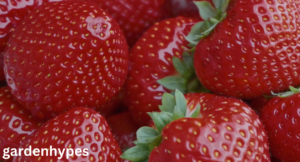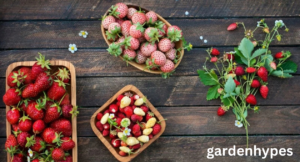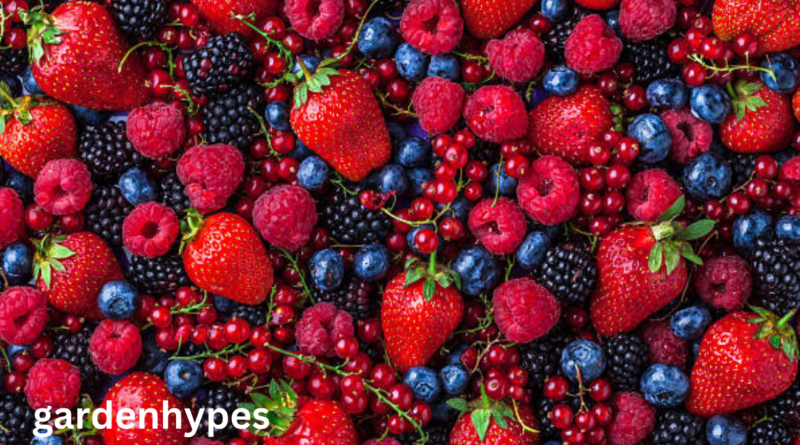Strawberry Varieties A Complete Guide to the Best Types of Strawberries
Introduction to Strawberry Varieties
When most people think of strawberries, they imagine that classic bright red berry, juicy and sweet, perfect for desserts, smoothies, or fresh snacking. But here’s something surprising—there isn’t just one type of strawberry. In fact, there are hundreds of strawberry varieties grown worldwide, each with its own unique flavor, size, yield, and growing conditions. Some are sweet like candy, others are tart and refreshing, and a few are tiny but packed with intense flavor. Choosing the right strawberry variety can make all the difference whether you’re a home gardener, a farmer, or simply a fruit lover who wants to know what’s on your plate.
click in link Watermelon Shortage
Strawberry varieties matter because they’re not all grown the same way. Some produce only once a year, while others keep giving fruit throughout the growing season. Certain varieties thrive in cold climates, while others love heat. And if you’ve ever wondered why strawberries from the store taste different from the ones in your backyard—it’s because they’re likely different varieties chosen for different purposes, like storage, shipping, or flavor.
The world of strawberries is a lot more exciting than it seems at first glance. From June-bearing to ever-bearing, day-neutral, and even wild alpine types, each one brings something unique to the table. Before you choose which to grow or buy, it’s worth diving into what makes each type special.
June-Bearing Strawberries
June-bearing strawberries are the classics. These are the varieties most people think of when imagining traditional strawberry harvesting. They produce a large crop once a year, usually in late spring to early summer (hence the name “June-bearing”). This type is ideal for anyone who loves a big harvest all at once, perfect for freezing, jam-making, or hosting a strawberry-themed feast.
One of the biggest advantages of June-bearing strawberries is their high yield. When these plants are in season, you can expect baskets full of berries in just a few weeks. The berries are typically large, sweet, and perfect for fresh eating as well as preserving. However, they do require patience—once they’re done fruiting, you won’t get another harvest until the following year.
Popular June-Bearing Varieties
Allstar
Allstar strawberries are big, firm, and juicy, with a perfect balance between sweetness and tartness. They’re often chosen by gardeners because of their resistance to diseases and their adaptability to different soil conditions. Allstar strawberries are excellent for fresh eating, baking, and freezing.
Jewel
Jewel is another popular June-bearing variety known for its vibrant red color and exceptional flavor. It produces consistently large berries that are not only beautiful but also deliciously sweet. Jewel is a favorite for home gardeners who want both taste and high yield.
Earliglow
True to its name, Earliglow is one of the earliest June-bearing strawberries to ripen. While the berries are smaller compared to others, their flavor is often considered superior—rich, sweet, and aromatic. Earliglow strawberries are perfect for those who want a head start on strawberry season.
Ever-Bearing Strawberries
If you’re the type of person who doesn’t want to wait a whole year for strawberries, ever-bearing varieties might be your best bet. Unlike June-bearing, ever-bearing strawberries produce two to three smaller harvests throughout the growing season—usually in spring, summer, and early fall.
Ever-bearing strawberries are great for gardeners who prefer a steady supply of fruit instead of one big harvest. While the berries are usually smaller than June-bearing types, they make up for it by keeping your garden productive for a longer period. They’re also perfect for fresh snacking, salads, and desserts, since you get small batches regularly instead of a glut all at once.
click in link Watermelon Shortage

Common Ever-Bearing Varieties
Ozark Beauty
Ozark Beauty is one of the most famous ever-bearing varieties. It produces large, sweet berries in multiple flushes throughout the season. This variety is especially beloved in colder climates because it handles frost better than many others.
Quinault
Quinault strawberries are unique because they can produce fruit even in their first year of planting. The berries are medium-sized, soft, and exceptionally sweet. While they don’t store as long as firmer types, they’re perfect for fresh eating and home gardens.
Fort Laramie
Fort Laramie is known for its hardiness. It produces medium to large berries that are flavorful and fragrant. This variety thrives in colder regions and is ideal for gardeners who want a dependable plant that keeps giving fruit.
Day-Neutral Strawberries
Day-neutral strawberries are like the overachievers of the strawberry world. Unlike June-bearing or ever-bearing, they don’t care about the length of the day. Instead, they keep producing fruit continuously from spring through fall, as long as conditions are right. This means you could potentially enjoy strawberries from your garden almost all year long in mild climates.
Day-neutral varieties are perfect for those who want a consistent harvest without long breaks. While the berries are often smaller than June-bearing types, their steady production makes them a favorite for home gardeners and small-scale farmers.
Famous Day-Neutral Varieties
Albion
Albion strawberries are prized for their sweetness and firm texture. They have a slightly elongated shape and are excellent for both fresh eating and desserts. Albion also stands out because of its disease resistance and long shelf life.
Seascape
Seascape is a California favorite, known for producing large, juicy, and sweet berries throughout the season. This variety is also tolerant of different climates, making it versatile for gardeners across regions.
Tribute
Tribute strawberries are smaller but very flavorful. They’re especially popular in regions with shorter growing seasons because they adapt well and keep producing until frost hits.

Wild and Alpine Strawberries
Wild and alpine strawberries might be small, but they’re packed with flavor. Unlike cultivated varieties, these tiny berries have an intense sweetness and aroma that many say is unmatched. Alpine strawberries, in particular, are grown in Europe and are often enjoyed fresh or used in gourmet dishes.
Unlike traditional varieties, alpine strawberries don’t send out runners, which makes them ideal for container gardening or edging pathways. They produce small but continuous harvests throughout the season. While you won’t get big, plump berries like supermarket strawberries, the flavor experience is completely unique—like a concentrated burst of strawberry essence.
click in link Watermelon Shortage
Some popular alpine strawberry types include “Mignonette” and “Alexandria,” both cherished for their rich taste and ornamental value in gardens.
FAQs
- What is the sweetest strawberry variety?
Albion and Earliglow are often considered some of the sweetest strawberry varieties. Albion offers a consistent sweetness with firm texture, while Earliglow has a rich, aromatic flavor that’s highly praised by strawberry lovers. - Which strawberry variety is best for containers?
Day-neutral and alpine varieties are excellent for container gardening. Alpine strawberries like Alexandria are especially popular because they don’t send out runners and produce steady fruit in small spaces. - How do I know which type suits my climate?
If you live in a cooler region, varieties like Fort Laramie or Ozark Beauty perform well. In warmer climates, Seascape and Albion are great choices. Always check your local extension office for region-specific recommendations. - What’s the difference between June-bearing and ever-bearing strawberries?
June-bearing strawberries produce one large crop per year, usually in early summer, while ever-bearing varieties produce smaller harvests two to three times per season. Day-neutral strawberries, on the other hand, produce consistently throughout the growing season. - Can I grow multiple strawberry varieties together?
Yes! Many gardeners mix June-bearing, ever-bearing, and day-neutral varieties to enjoy both a big harvest for preserving and smaller, continuous harvests for fresh eating. Just make sure to space them properly to avoid overcrowding.
